Seok Jung Hyun’s Stonehouses Anatomy is a groundbreaking resource for artists, blending detailed anatomical knowledge with artistic insights. Created over nine years, it features over 1,500 illustrations, offering a unique perspective on human anatomy through analogies and comparisons. Originally in Korean, the English translation has expanded its reach, making it accessible to a global audience. This book not only serves as a tool for mastering anatomical drawing but also encourages self-understanding and body acceptance, reflecting the author’s vision of art and anatomy as interconnected disciplines.
1.1 Overview of the Book
Stonehouses Anatomy is a comprehensive guide to human anatomy designed for artists, offering a unique blend of artistic and biological perspectives. Created by Seok Jung Hyun over nine years, it features over 1,500 detailed illustrations that bring anatomy to life through engaging analogies and comparisons. The book began as the author’s personal notebook, filled with insights gained from his career as an illustrator and exchanges with experts. It not only provides practical tips for drawing but also aims to foster self-understanding and body acceptance. The English translation has made this invaluable resource accessible to a global audience, bridging art and anatomy like never before.
1.2 Author Background: Seok Jung Hyun
Seok Jung Hyun, a renowned professional illustrator, developed a deep expertise in human anatomy through years of dedicated study. His work emphasizes the intersection of art and biological accuracy, refined through collaborations with experts in various fields. Hyun’s unique approach to anatomy stems from his extensive research and practical application in his illustrations. His insights have been pivotal in creating a resource that not only aids artists but also encourages a broader appreciation of the human form. His vision for Stonehouses Anatomy reflects a commitment to understanding and celebrating the human body in all its complexity.
1.3 Importance of Anatomy for Artists
Understanding anatomy is essential for artists to accurately depict the human form in their work. It provides the foundation for creating realistic and expressive figures, enabling artists to capture the subtleties of movement, proportion, and structure. Anatomy helps artists move beyond surface-level representation, allowing them to convey emotion and depth through their drawings. For both beginners and experienced artists, studying anatomy enhances creativity and technical skill, ensuring their work is both visually compelling and anatomically accurate. This knowledge is indispensable for mastering the human form and bringing artistic visions to life with precision and authenticity.
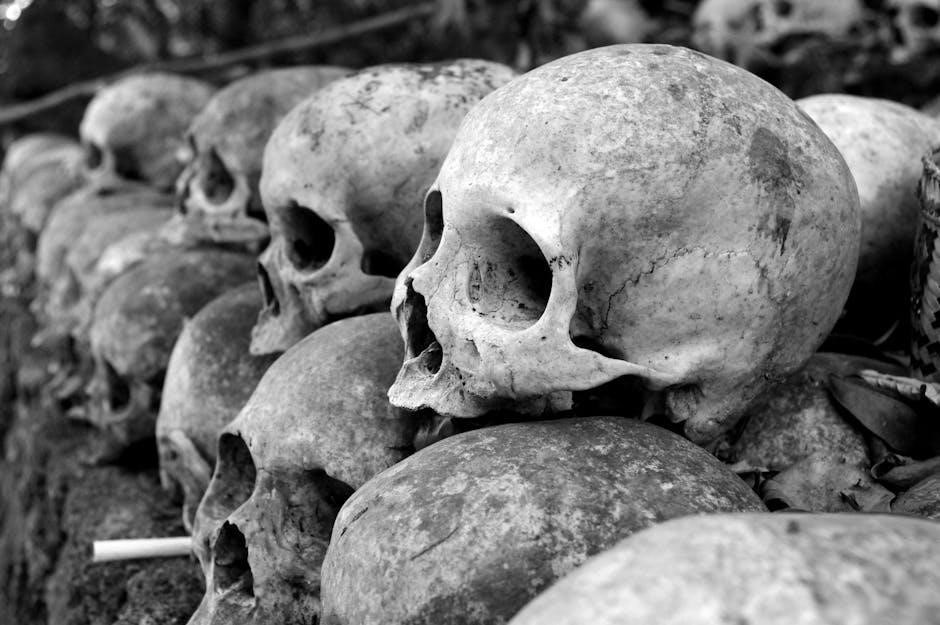
The Concept and Creation of Stonehouses Anatomy
Stonehouses Anatomy emerged from Seok Jung Hyun’s nine-year dedication to blending art and anatomy. Originating from his personal notebook, it evolved into a comprehensive artistic guide.
2.1 The Nine-Year Journey of Creation
Seok Jung Hyun dedicated nine years to crafting Stonehouses Anatomy, meticulously refining his artistic and anatomical expertise. The book began as a personal notebook, evolving into a detailed guide.
2.2 Unique Blend of Art and Anatomy
Stonehouses Anatomy seamlessly merges artistic expression with anatomical precision, offering a fresh perspective for creators. The book’s 1,500+ illustrations provide vivid, detailed representations of the human form, while its analogies and comparisons make complex concepts accessible. Designed for artists, it bridges the gap between biological accuracy and creative interpretation. This unique approach not only aids in mastering anatomy for drawing but also fosters a deeper appreciation of the human body’s structure and beauty, making it a valuable resource for both beginners and experienced artists seeking inspiration and technical guidance.
2.3 The Author’s Personal Notebook as a Foundation
Stonehouses Anatomy originated from Seok Jung Hyun’s personal notebook, where he compiled artistic anatomy knowledge over years as a professional illustrator. This foundation provides a unique, intimate perspective, blending practical insights with creative techniques. The notebook’s evolution into a comprehensive guide reflects Seok’s dedication to understanding the human body through art. It includes tips, analogies, and biological facts, offering a relatable and accessible approach to anatomy. This personal touch makes the book a valuable resource for artists, showcasing how individual study and expertise can transform into a shared educational treasure.

Key Features of Stonehouses Anatomy
Featuring over 1,500 detailed illustrations, Stonehouses Anatomy combines artistic and biological perspectives, with analogies and comparisons to enhance understanding. Its unique approach bridges anatomy and creativity seamlessly.
3.1 Over 1,500 Illustrations
Stonehouses Anatomy boasts an impressive collection of over 1,500 illustrations, meticulously crafted by Seok Jung Hyun. These visuals are not merely anatomical diagrams but works of art, blending precision with creativity. Each illustration is designed to guide artists in understanding the intricacies of the human body, from the structure of bones to the subtleties of facial expressions. The detailed drawings, enriched with artistic flair, make complex anatomical concepts accessible and engaging. This extensive visual library is a testament to the author’s dedication to bridging the gap between anatomy and artistic expression.
3.2 Biological and Artistic Perspectives
Stonehouses Anatomy uniquely merges biological accuracy with artistic interpretation, offering a dual perspective that caters to both scientists and creatives. The book provides detailed biological explanations of anatomical structures, while also showcasing artistic techniques to translate these into drawings. Seok Jung Hyun’s background as an illustrator shines through in his ability to simplify complex biological concepts into visually engaging and artistically relevant lessons. This blend makes the book invaluable for artists seeking to deepen their understanding of anatomy while maintaining a creative approach to their craft, ensuring accuracy and inspiration go hand in hand.
3.4 Analogies and Comparisons for Better Understanding
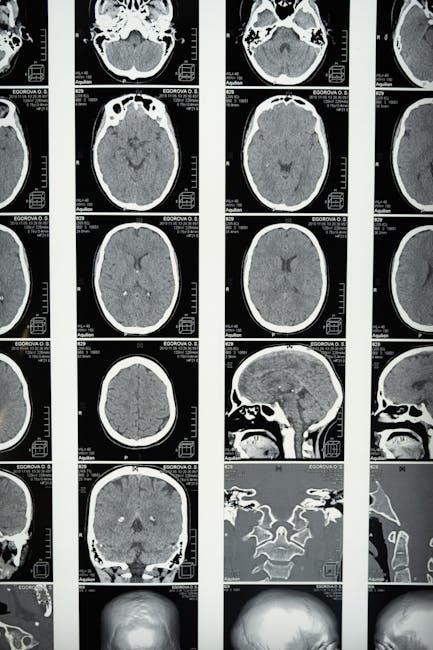
Seok Jung Hyun employs creative analogies and comparisons to simplify complex anatomical concepts, making them more relatable and memorable for artists. For instance, he likens muscles to ropes and bones to architectural frameworks, helping readers visualize their functions and relationships. These analogies, present in both text and illustrations, bridge the gap between technical details and artistic application. By breaking down anatomy into familiar metaphors, the book enhances comprehension and retention, offering a unique learning experience that aligns with the author’s goal of making anatomy accessible and engaging for artists of all levels. This approach fosters a deeper connection between art and science.
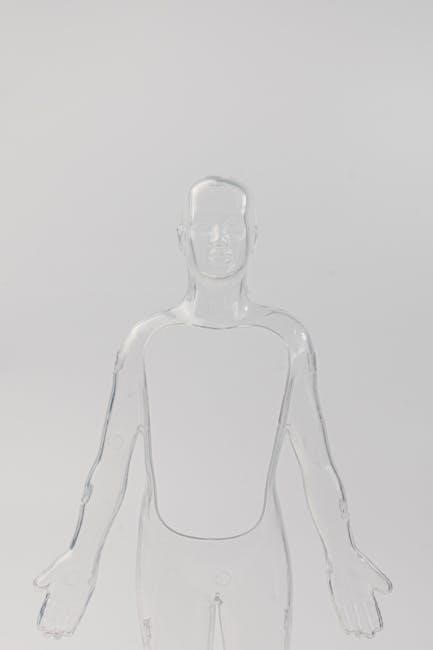
Educational Value for Artists
Stonehouses Anatomy serves as a comprehensive guide for understanding and loving the human body, offering tips for drawing anatomy and memory techniques to aid artistic creation and self-expression.
4.1 Understanding Human Anatomy for Drawing
Stonehouses Anatomy provides a detailed exploration of human anatomy, offering insights through analogies and biological explanations; It helps artists grasp the structure and function of muscles, bones, and other bodily features. The book emphasizes understanding anatomy as a foundation for realistic and expressive drawing. By breaking down complex forms into manageable concepts, it enables artists to draw from memory and capture the essence of the human body with accuracy and creativity. This approach makes it invaluable for both beginners seeking foundational knowledge and experienced artists refining their skills in figurative art.
4.2 Tips and Guidance for Artistic Anatomy
Stonehouses Anatomy offers practical tips and guidance for mastering artistic anatomy, tailored for both novices and experienced artists. Seok Jung Hyun provides techniques for observing and drawing the human body, emphasizing understanding over memorization. The book includes methods for capturing proportions, movements, and expressions, as well as strategies for simplifying complex forms. By integrating biological insights with artistic perspectives, it helps artists develop a deeper connection to their subjects. The guidance is complemented by analogies and comparisons, making anatomy accessible and engaging for those seeking to refine their artistic skills in a structured and creative manner.
4.3 Landmarks and Memory Techniques
Stonehouses Anatomy provides a comprehensive guide to identifying anatomical landmarks and employing memory techniques. These methods help artists commit complex structures to memory, enabling accurate and confident drawing. The book emphasizes understanding key points and relationships between muscles and bones, rather than rote memorization. By using relatable analogies and comparisons, Seok Jung Hyun makes it easier to recall intricate details. These techniques are particularly useful for creating cohesive and proportional artwork, allowing artists to focus on expression and creativity while maintaining anatomical accuracy. The approach fosters a deeper, more intuitive grasp of human anatomy.

Reception and Reviews
Stonehouses Anatomy received significant hype before its release, praised for its unique analogies and artistic insights. Some critics noted its high cost and controversial content density.
5.1 Hype and Anticipation Before Release
The release of Stonehouses Anatomy was highly anticipated, with artists and YouTubers hyping it even before its launch. The book’s reputation as a comprehensive artistic anatomy guide grew significantly.
Seok Jung Hyun’s nine-year dedication to the project and its unique blend of art and biology fueled excitement. Many saw it as a game-changer for understanding human anatomy creatively.
The artistic community eagerly awaited its English translation, praising its detailed illustrations and analogies. This buzz solidified its status as a must-have resource for artists worldwide.
5.2 Artist and YouTuber Recommendations
Artists and YouTubers widely recommend Stonehouses Anatomy, praising its unique approach to artistic anatomy. Creators like Proko, Art Camp, and Jazza highlight its detailed illustrations and innovative teaching methods. Many artists appreciate how the book bridges biology and art, making complex anatomy accessible. The personal touch of the author’s notebook foundation adds authenticity, resonating with learners. Its analogies and comparisons are particularly praised for aiding memory and understanding. This endorsement underscores its value as a resource for both beginners and experienced artists seeking to refine their anatomical drawing skills.
5.4 Mixed Reviews: Praise and Criticism
Stonehouses Anatomy has received both acclaim and criticism. Many praise its 1,500 detailed illustrations and unique analogies, calling it a groundbreaking resource for artists. The book’s blend of artistic and biological perspectives is highly appreciated. However, some critics find the content overly dense, making it challenging to digest. Others have raised concerns about gender stereotypes, particularly in the portrayal of women. Despite these criticisms, the book remains a popular choice among artists and educators, with many valuing its innovative approach to teaching anatomy.
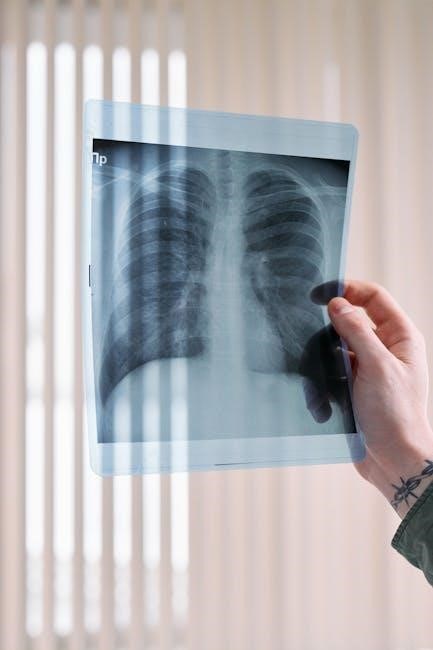
Content and Structure
Stonehouses Anatomy is structured around the author’s personal notebook, blending artistic and biological perspectives. It features over 1,500 detailed illustrations, analogies, and memory techniques to enhance learning.
6.1 Tools and Resources for Learning
Stonehouses Anatomy serves as a comprehensive guide, offering tools like analogies and memory techniques to aid artists in mastering human anatomy. The book includes over 1,500 detailed illustrations, blending artistic and biological perspectives. Seok Jung Hyun’s unique approach provides landmarks and tips for drawing accurately. The English translation enhances accessibility, making it a valuable resource for both beginners and experts. Digital versions, such as the PDF, allow for easy reference, while the structured content ensures a deep understanding of anatomical concepts. This blend of art and science creates a holistic learning experience.
6.2 The Role of Bones in Anatomy
The book emphasizes the skeletal system as the foundational framework of the human body, providing structure and support. Bones serve as anchors for muscles, enabling movement and maintaining posture. Seok Jung Hyun’s detailed illustrations highlight how bones protect vital organs, such as the skull safeguarding the brain and the ribcage shielding the heart and lungs. The text explains the interconnectedness of bones, offering insights into their shapes and functions. This section is crucial for artists, as understanding bones helps in accurately depicting the body’s form and proportions, making it a key component of artistic anatomy education.
6.3 Anomalies and Quirks of the Human Body
Seok Jung Hyun’s Stonehouses Anatomy delves into the fascinating anomalies and quirks of the human body, revealing unique variations in bone structure, muscle attachments, and other anatomical features. The book highlights how these irregularities contribute to individual diversity, offering artists a deeper understanding of human complexity. Through detailed illustrations and explanations, Seok explores unusual anatomical traits, emphasizing their importance in creating authentic and nuanced artistic representations. This section encourages artists to embrace and depict the natural variations that make each body distinct, enhancing their ability to capture realism and individuality in their work.
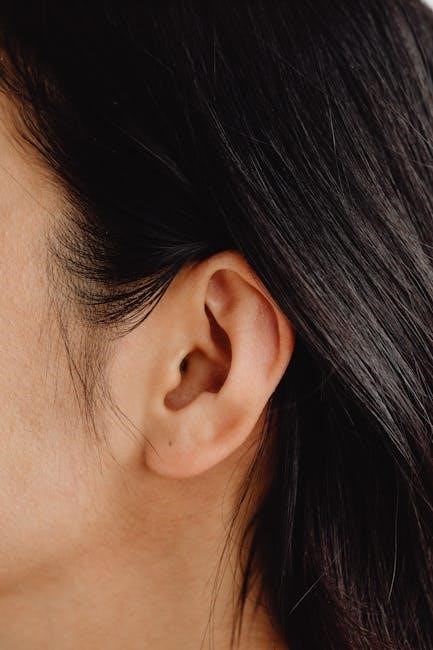
The Book’s Purpose Beyond Art
The book aims to foster self-understanding and body acceptance, encouraging readers to appreciate human diversity. It serves as both an artistic guide and a tool for personal growth, promoting a deeper connection with one’s body.
7.1 A Guide to Self-Understanding
Stonehouses Anatomy transcends its role as an artistic resource, offering a profound guide to self-understanding. Seok Jung Hyun emphasizes the importance of loving and accepting oneself and others. By exploring the human body’s intricacies, the book encourages readers to embrace diversity and foster empathy. It blends biological insights with artistic perspectives, helping individuals connect with their own bodies on a deeper level. This unique approach not only aids in artistic growth but also promotes personal development and self-awareness, making it a valuable tool for anyone seeking to understand themselves and others better.
7.2 Promoting Love and Acceptance of Bodies
Stonehouses Anatomy advocates for body positivity by celebrating the uniqueness of human forms. Seok Jung Hyun’s work challenges societal norms by highlighting diversity and individuality. The book’s inclusive approach encourages readers to appreciate all body types, fostering a sense of acceptance and love. Through its detailed illustrations and insightful narratives, it promotes empathy and understanding. This perspective not only enriches artistic practices but also contributes to a broader cultural shift toward valuing and embracing the natural variety of human bodies. The book serves as a powerful reminder of the beauty in diversity and the importance of self-love.
7.3 The Author’s Vision for the Book
Seok Jung Hyun envisioned Stonehouses Anatomy as more than an anatomical guide for artists. He aimed to create a resource that fosters self-understanding and appreciation of the human body. By blending artistic and biological perspectives, the book encourages readers to embrace diversity and uniqueness. Seok hopes it will inspire not only artists but also anyone seeking to deepen their connection with their own body and others. His vision extends beyond technical knowledge, aiming to promote empathy, acceptance, and love for the human form in all its complexity and beauty.
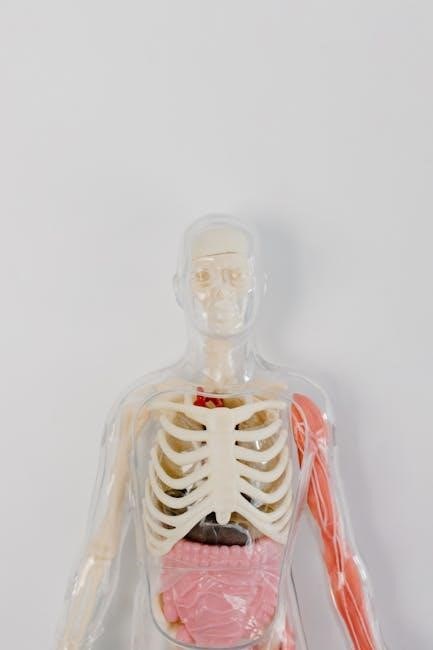
Controversies and Criticisms
The book has faced criticism for sexualized portrayals of women, reinforcing gender stereotypes, and lacking depth in anatomical details, sparking debates among readers and experts alike.
8.1 Sexualized Portrayals of Women
Critics argue that Stonehouses Anatomy often depicts women in sexualized poses, such as wearing panties, swimsuits, or revealing outfits, which some find objectifying. These illustrations, while artistic, have sparked concerns about gender representation and stereotypes. The book’s focus on female forms in suggestive attire has led to accusations of prioritizing aesthetics over anatomical accuracy. This criticism highlights a broader issue in anatomical art, where female bodies are often depicted in ways that blend anatomy with sensuality, potentially undermining the book’s educational intent. Such portrayals have divided opinions, with some defending the artistry and others calling for more neutral representations.
8.2 Gender Roles and Stereotypes
Stonehouses Anatomy has faced criticism for perpetuating gender roles and stereotypes, particularly in its depiction of female figures. Some illustrations feature women in revealing clothing, such as swimsuits or stockings, which critics argue reinforce objectification and gendered norms. The book’s focus on idealized forms has led to accusations of promoting unrealistic beauty standards and gender bias. These portrayals, while artistic, have sparked debates about the representation of women in anatomical art and its impact on societal perceptions. Critics argue that such depictions divert from the book’s educational purpose and instead emphasize aesthetic appeal over anatomical accuracy.
8.3 Criticism of Content Density
Some critics argue that Stonehouses Anatomy lacks depth in its content despite its high price. The book’s 274 pages have been deemed insufficient for comprehensive anatomical study, with certain sections feeling rushed or overly simplistic. While the illustrations are praised, the textual explanations are often brief, leaving gaps in detailed anatomical understanding. This has led to disappointment among advanced artists seeking in-depth knowledge. Additionally, the inclusion of non-essential content, such as cartoons and anecdotes, has drawn criticism for diluting the book’s educational focus. This imbalance between form and substance has sparked debate about its value for serious anatomical study.
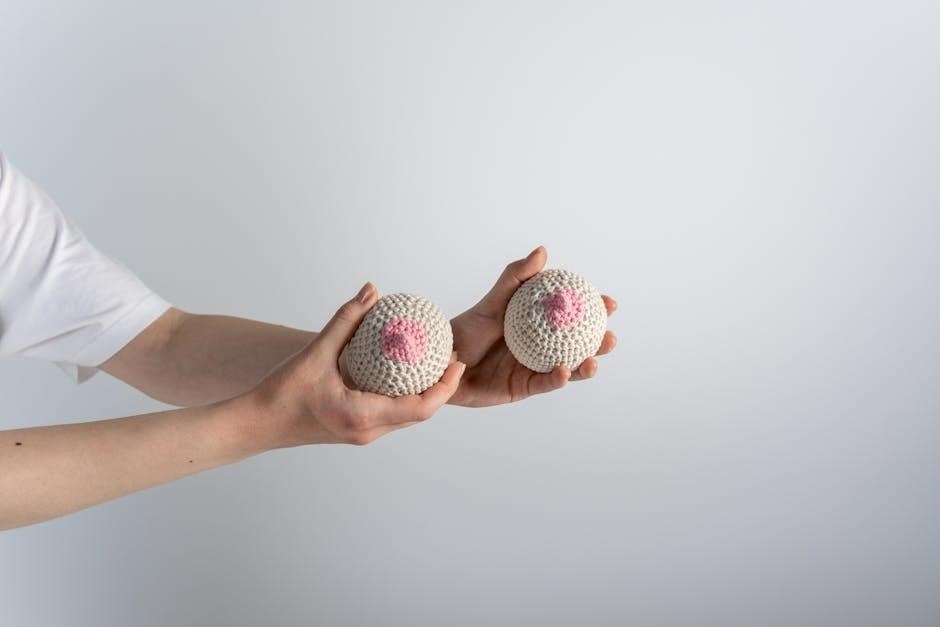
The English Translation and Availability
The English translation of Stonehouses Anatomy has expanded its global reach, making it accessible to international artists. It is widely available in libraries, online retailers, and as a PDF, though some critics find the price high for the content provided.
9.1 Transition from Korean to English
The English translation of Stonehouses Anatomy marks a significant milestone, expanding its accessibility beyond Korean-speaking audiences. Initially released in Korean, the book gained popularity worldwide, prompting the translation; The transition ensured that Seok Jung Hyun’s intricate anatomical insights and artistic interpretations could reach a global audience. The English version retains the original’s depth, featuring over 1,500 illustrations and unique analogies. This translation bridges cultural gaps, making the book a invaluable resource for international artists and anatomy enthusiasts alike, while staying true to the author’s vision of blending art and science.
9.2 Availability in Libraries and Online
Stonehouses Anatomy is widely available in libraries and online platforms, catering to global demand. Many libraries offer access through inter-library loan programs, ensuring accessibility for those who cannot purchase it. Online retailers like Amazon and eBay feature both hardcover and digital versions. The book’s popularity has also led to its presence in specialty art stores and educational websites. Additionally, the PDF version is sought after by digital learners, making it a versatile resource for artists and anatomy enthusiasts worldwide.
9.3 PDF and Digital Versions
The Stonehouses Anatomy PDF and digital versions are highly sought after for their convenience and accessibility. Available for purchase online, the digital edition allows artists to study anatomy on various devices, enhancing portability and ease of use. The PDF format retains the book’s high-quality illustrations and detailed explanations, making it a valuable resource for digital learners. While some users appreciate the flexibility, others note that sharing or redistributing the file is prohibited due to licensing restrictions. Despite this, the digital version remains a popular choice for those who prefer learning in a modern, tech-friendly environment.
Stonehouses Anatomy is a landmark resource for artists, offering a unique blend of art and anatomy. Its detailed insights and stunning illustrations leave a lasting impact on the field.
10.1 Final Thoughts on Stonehouses Anatomy
Stonehouses Anatomy is a monumental achievement in artistic anatomy, offering unparalleled depth and creativity. Seok Jung Hyun’s nine-year dedication shines through in its over 1,500 illustrations, blending art and biology seamlessly. The book’s unique analogies and comparisons make complex concepts accessible, while its narrative and cartoons add a personal touch. Though criticized for content density and gender portrayals, its educational value remains undeniable. It stands as a testament to the author’s vision, inspiring both beginners and experts to explore anatomy with fresh eyes and appreciation for human form.
10.2 Recommendations for Beginners and Experts
Stonehouses Anatomy is a versatile resource for both beginners and experienced artists. For newcomers, its intuitive analogies and detailed illustrations provide a solid foundation in anatomical drawing. Seasoned artists will appreciate its unique perspectives and creative insights, offering fresh approaches to familiar subjects. While some may find the content dense, the book’s wealth of knowledge makes it a valuable addition to any artistic library. Beginners should start with the fundamentals section, while experts can dive into its advanced techniques and unconventional wisdom, ensuring a rewarding experience for all skill levels.
10.3 The Book’s Legacy in Artistic Anatomy
Seok Jung Hyun’s Stonehouses Anatomy is poised to leave a lasting impact on the field of artistic anatomy. Its unique blend of art and science, combined with over 1,500 detailed illustrations, sets it apart as a comprehensive and inspiring resource. The book’s use of analogies and comparisons makes complex anatomical concepts accessible, while its personal, notebook-style approach adds a touching human element. As the English translation expands its reach, it is likely to become a cornerstone for both students and professionals, shaping the way future artists study and interpret the human form.